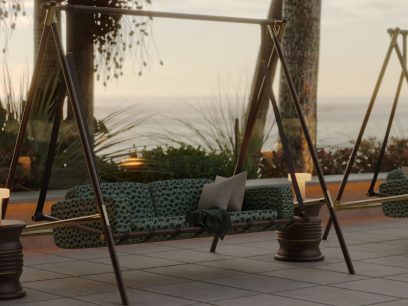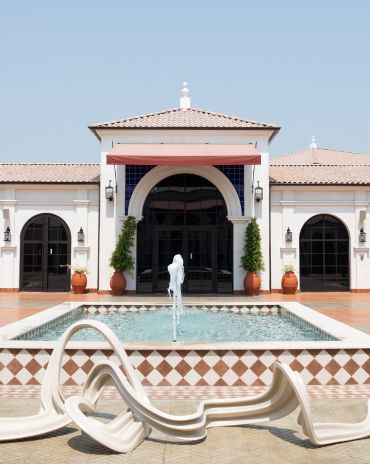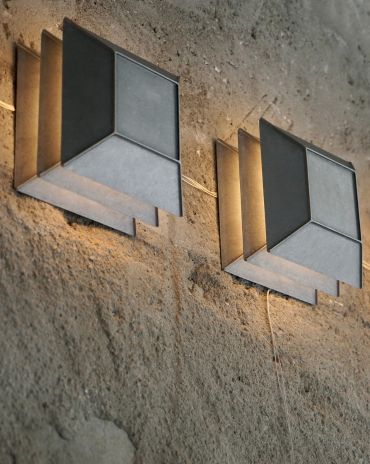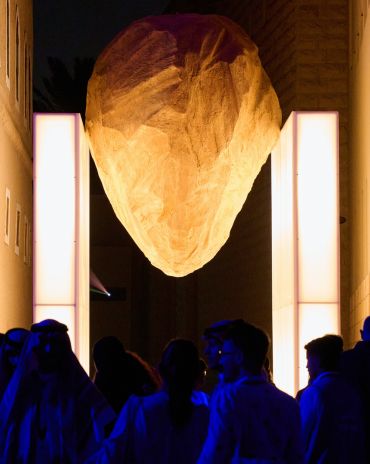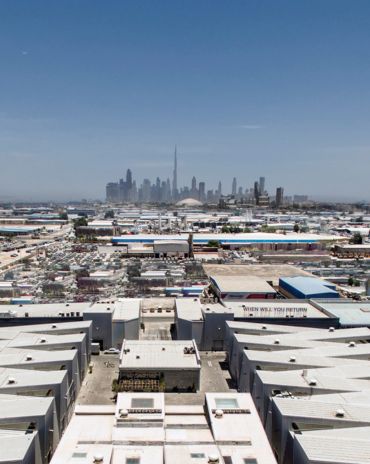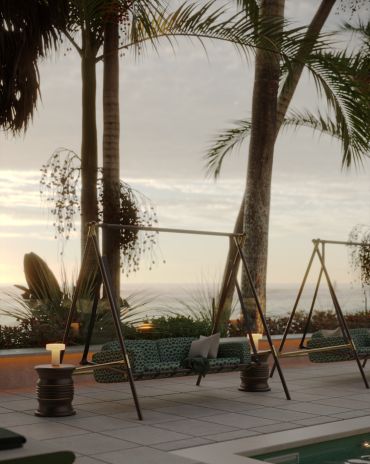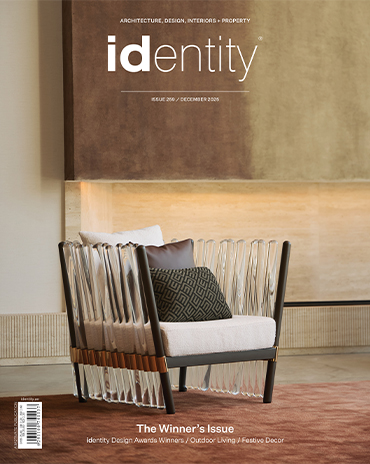Copyright © 2025 Motivate Media Group. All rights reserved.
Formafantasma turns Tacchini’s sofas inside out with new wool upholstery inspired by antique matresses
The new fabrication process aims to introduce a nature-based approach
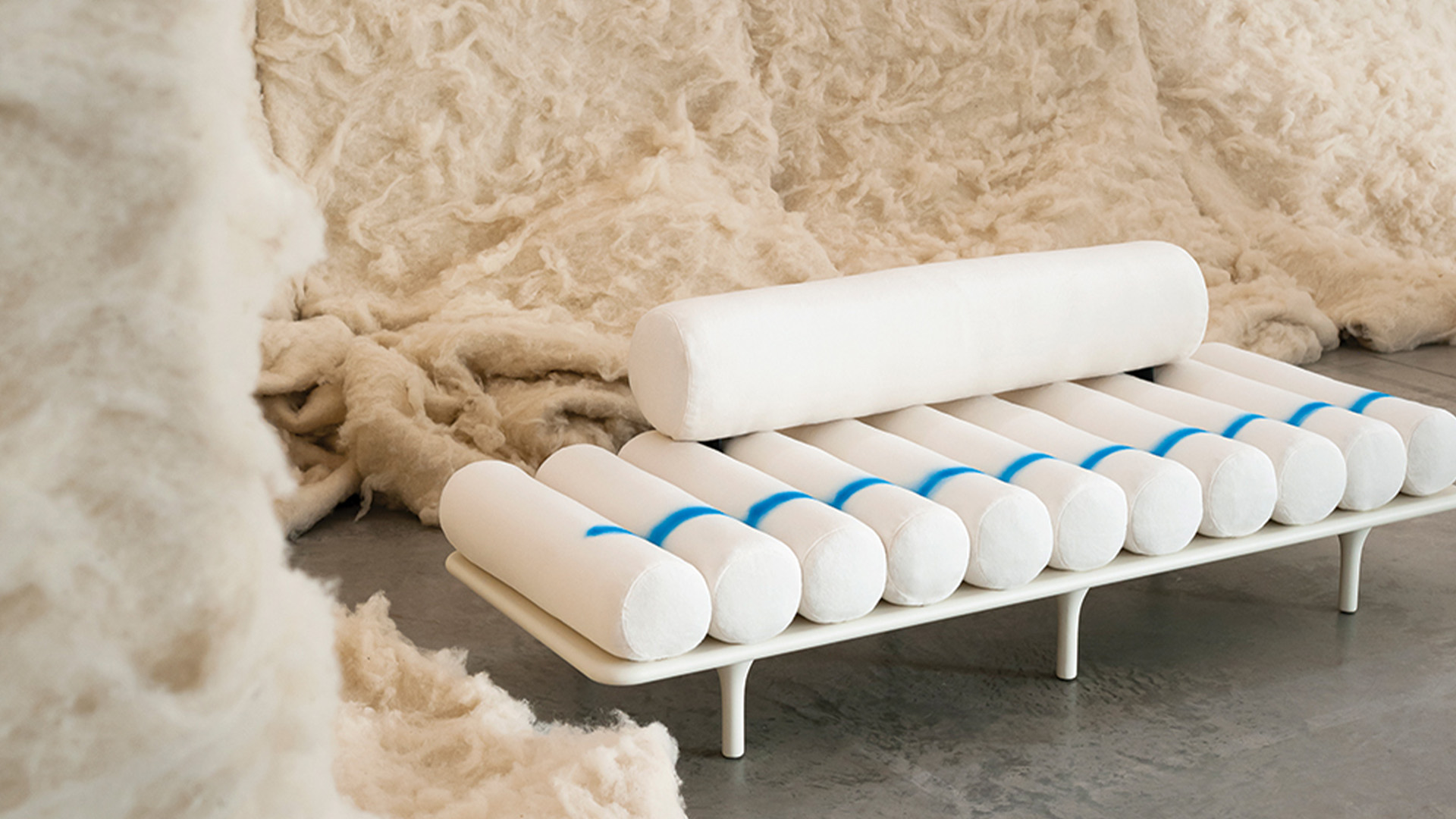
Formafantasma – led by Italian architects Andrea Trimarchi and Simone Farresin – describe themselves as a research-based studio investigating the ecological, historical, political and social forces shaping the discipline today – and rightfully so. While also contributing to the commercial segment of the industry, the studio’s work is largely led by investigations into the more passive actors of the design process, such as trees (the focus of its ‘Cambio’ exhibition that explored wood and the global dynamics of the timber industry), animals and the wider environment.
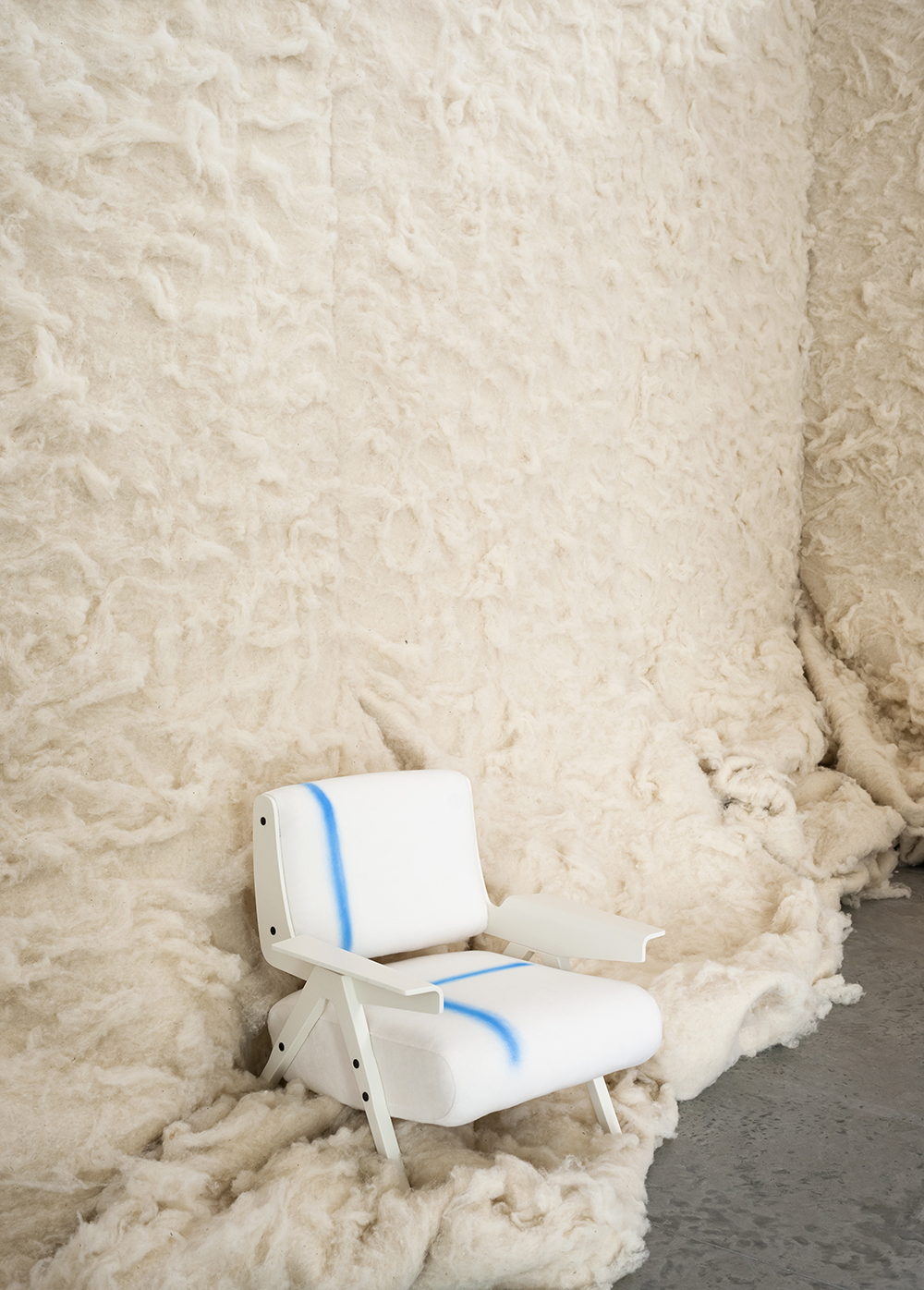
“For a very long time, as designers we have been focusing [solely] on the relationship with humans, making design a human-centred activity, which, in one way, we think is positive. But a human-centred perspective also means only focusing on their needs and aspirations and undermining the analysis of the surrounding production in the design of objects and systems,” Trimarchi tells identity.
“When you talk about the extraction of materials, you [must] also talk about the ecosystems and animals involved in the production process; other beings that are not human, and so the inclusion of this in our investigation is a way of recognising that the ecosystems of object production and design are much larger and [reach] far beyond the user,” he says.
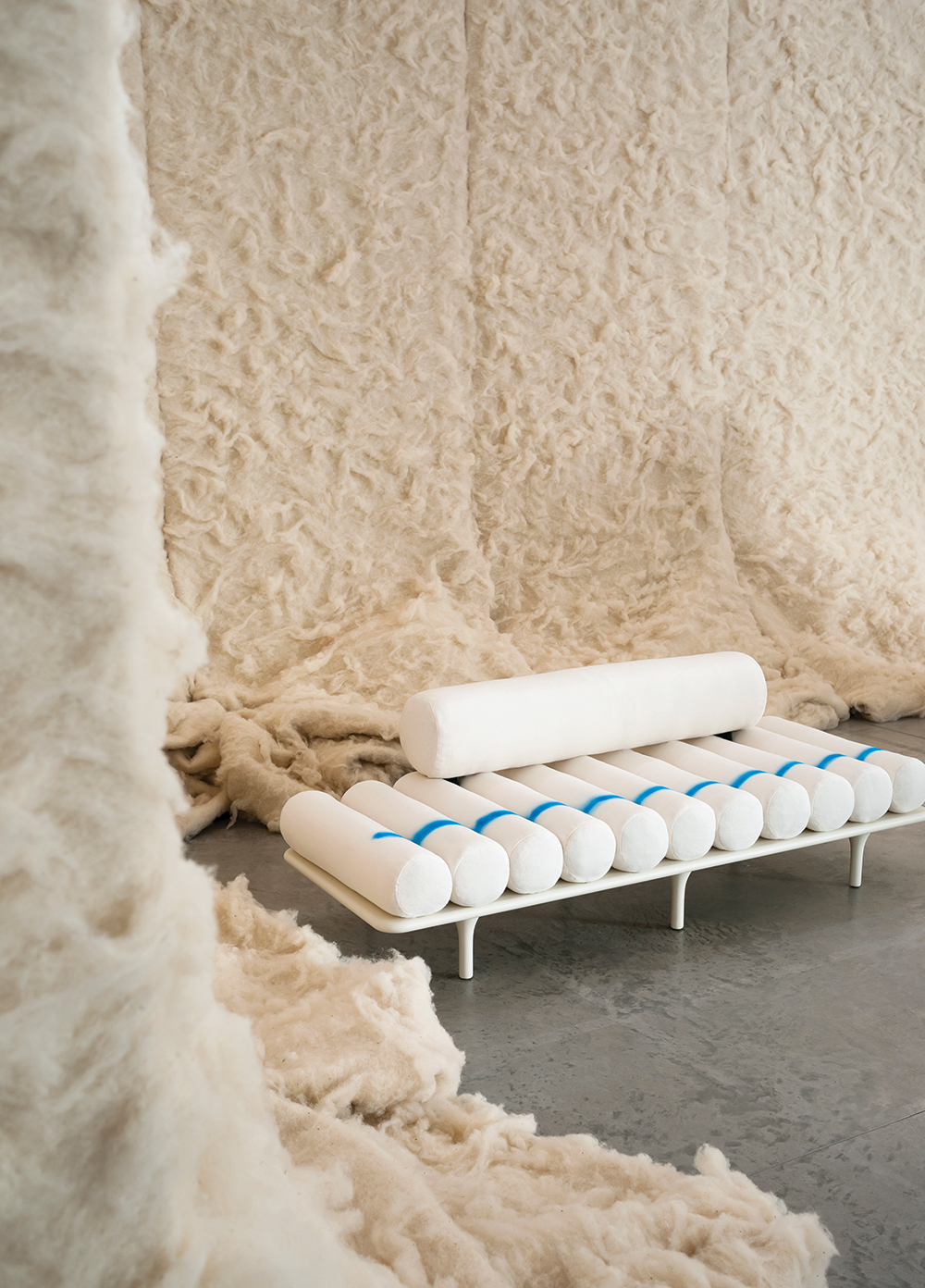
The duo is currently preparing for the opening of its exhibition titled ‘Oltre Terra’ at The National Museum of Norway in Oslo, where they were commissioned to explore the subject of wool along with its farming and distribution and the sheep used for its production. An outcome of this research informs their latest collaboration with furniture brand Tacchini for a project titled ‘Tacchini Flock’ that rethinks the brand’s manufacturing process by introducing a nature-focused alternative based on circularity and environmental concerns as well as time-honoured traditions.
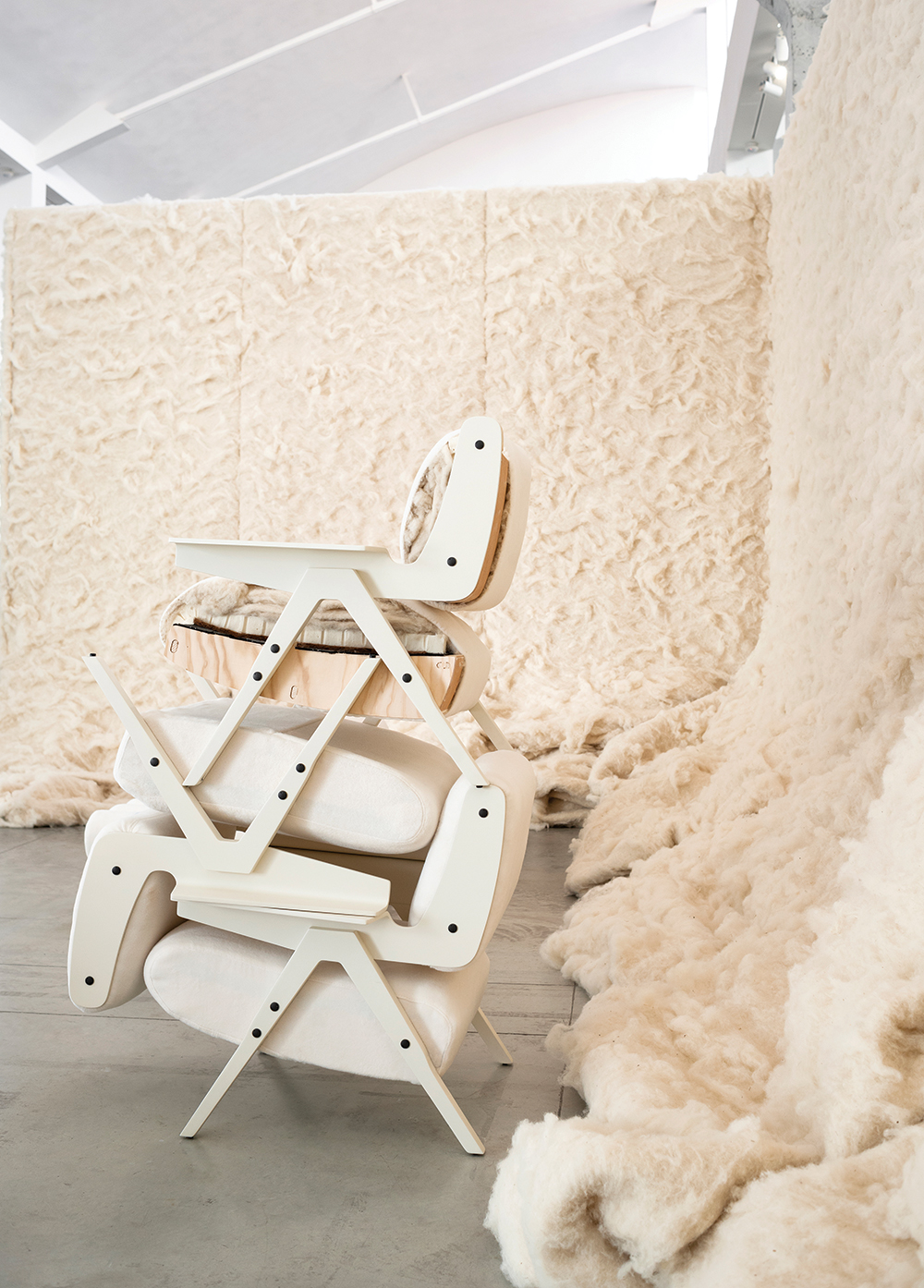
Part of a wider showcase at Capsule Plaza in Milan, the project involved reworking the upholstery of four of Tacchini’s most iconic seating designs from the inside. Using a technique inspired by antique mattress production in Italy, the new upholstery uses surplus sheep’s wool in combination with natural latex to replace industrial foam, utilising a natural material that has “paradoxically” been treated as a waste material.
As with most projects by Formafantasma, the goal is never just about the object itself but a step towards a larger mission. ‘Tacchini Flock’ looks at the wider relationship with shepherding in Italy and Europe as a whole, and the challenges faced by nomadic farmers in disposing of wool – the same challenges that are presented in other parts of the world due to the centralised wool market that is based primarily in Australia, South Africa and New Zealand.
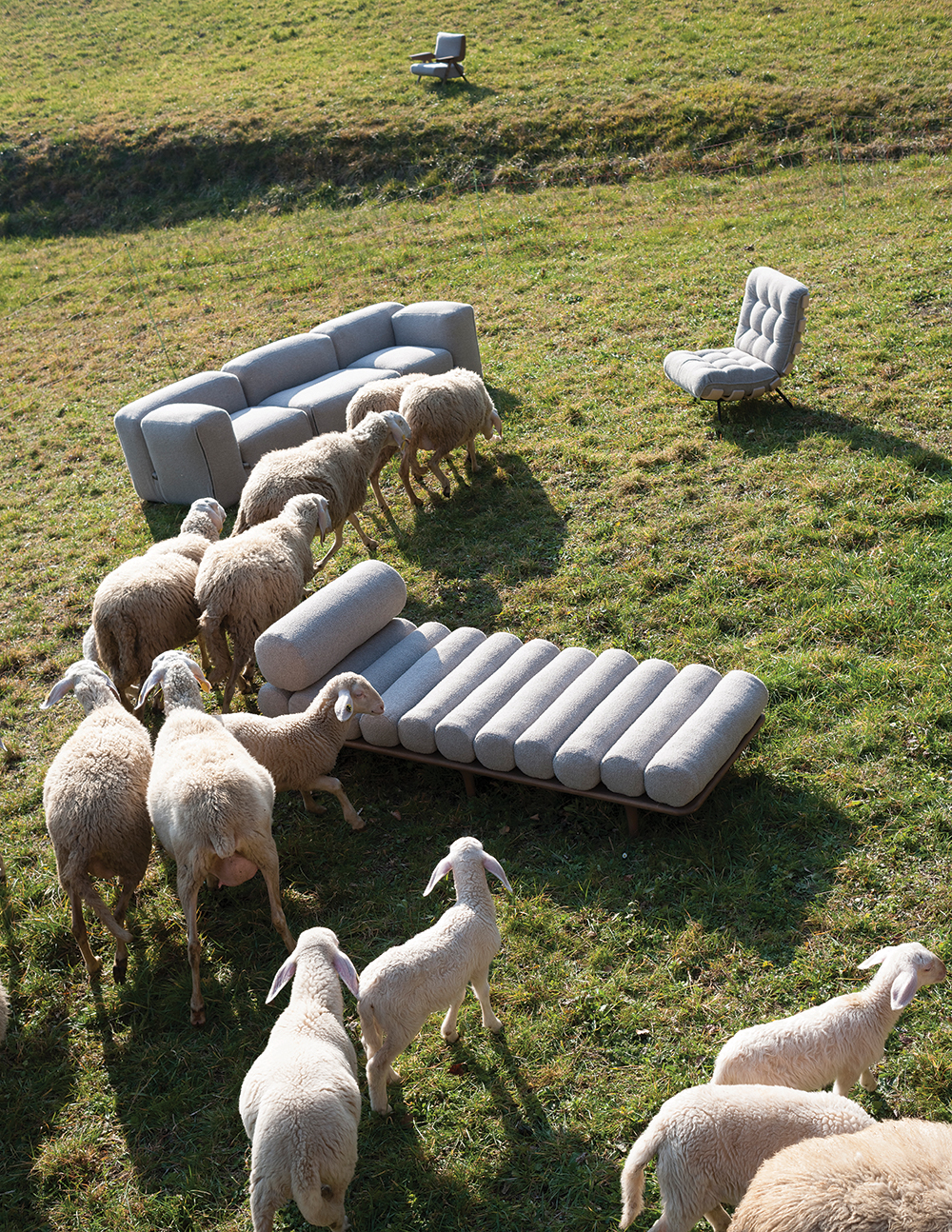
“Many facilities for the processing of wool are no longer available, so farmers need to dispose of wool almost as a waste material, [which causes] a struggle with the management process or [ends up] becoming a cost,” Trimarchi explains. “For us, this project with Tacchini is a way to introduce a more sustainable material – but it is also about thinking about the larger implications of producing things with wool and how it can be beneficial for multiple actors. And it is [also] a way of showing how what we are doing with a museum or an institution in terms of research can also be applied to a company,” he adds.
Each of the designs will continue to be available by the brand with its traditional stuffing, now alongside an option with the new wool and natural latex filling conceived by the duo. And while the team acknowledges the benefits of using the latter option, they also admit that the proposal is far from perfect. “I think the challenge here is that wool over the years needs to be maintained – it becomes much more compact and loses volume, and this means that the product will need to be opened up, moved and aired out,” Trimarchi explains. This would also mean sending the furniture back to Tacchini’s facilities for maintenance which could involve travel, depending on the user’s location.
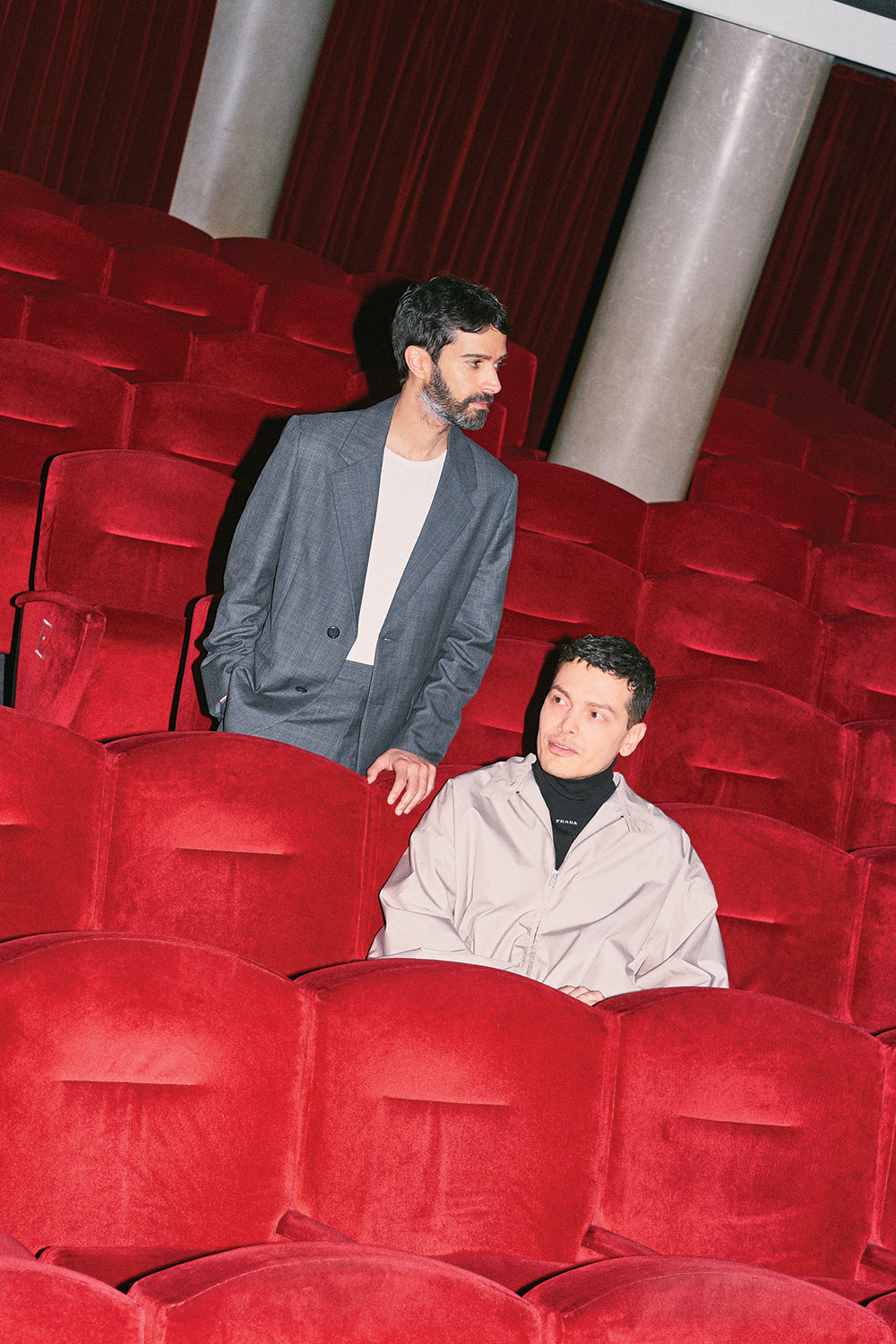
“The system now is not perfect, but I think it is important to at least start making these changes and over the years to see where it leads,” Trimarchi says. “The next step we want to take is designing a product for Tacchini [where] we start from the material and design around it. I don’t know how long that will take; hopefully it will be ready by next year – but it is the next step in the project.”
And while much of the research takes inspiration from traditional techniques, Trimarchi assures us that the past is not the driving force here. “This project is not about tradition or nostalgia,” he says. “It is actually about going forward and doing better.”
The Latest
Maison Aimée Opens Its New Flagship Showroom
The Dubai-based design house opens its new showroom at the Kia building in Al Quoz.
Crafting Heritage: David and Nicolas on Abu Dhabi’s Equestrian Spaces
Inside the philosophy, collaboration, and vision behind the Equestrian Library and Saddle Workshop.
Contemporary Sensibilities, Historical Context
Mario Tsai takes us behind the making of his iconic piece – the Pagoda
Nebras Aljoaib Unveils a Passage Between Light and Stone
Between raw stone and responsive light, Riyadh steps into a space shaped by memory and momentum.
Reviving Heritage
Qasr Bin Kadsa in Baljurashi, Al-Baha, Saudi Arabia will be restored and reimagined as a boutique heritage hotel
Alserkal x Design Miami: A Cultural Bridge for Collectible Design
Alserkal and Design Miami announce one of a kind collaboration.
Minotticucine Opens its First Luxury Kitchen Showroom in Dubai
The brand will showcase its novelties at the Purity showroom in Dubai
Where Design Meets Experience
Fady Friberg has created a space that unites more than 70 brands under one roof, fostering community connection while delivering an experience unlike any other
Read ‘The Winner’s Issue’ – Note from the editor
Read the December issue now.
Art Dubai 2026 – What to Expect
The unveils new sections and global collaborations under new Director Dunja Gottweis.
‘One Nation’ Brings Art to Boxpark
A vibrant tribute to Emirati creativity.
In conversation with Karine Obegi and Mauro Nastri
We caught up with Karine Obegi, CEO of OBEGI Home and Mauro Nastri, Global Export Manager of Italian brand Porada, at their collaborative stand in Downtown Design.

